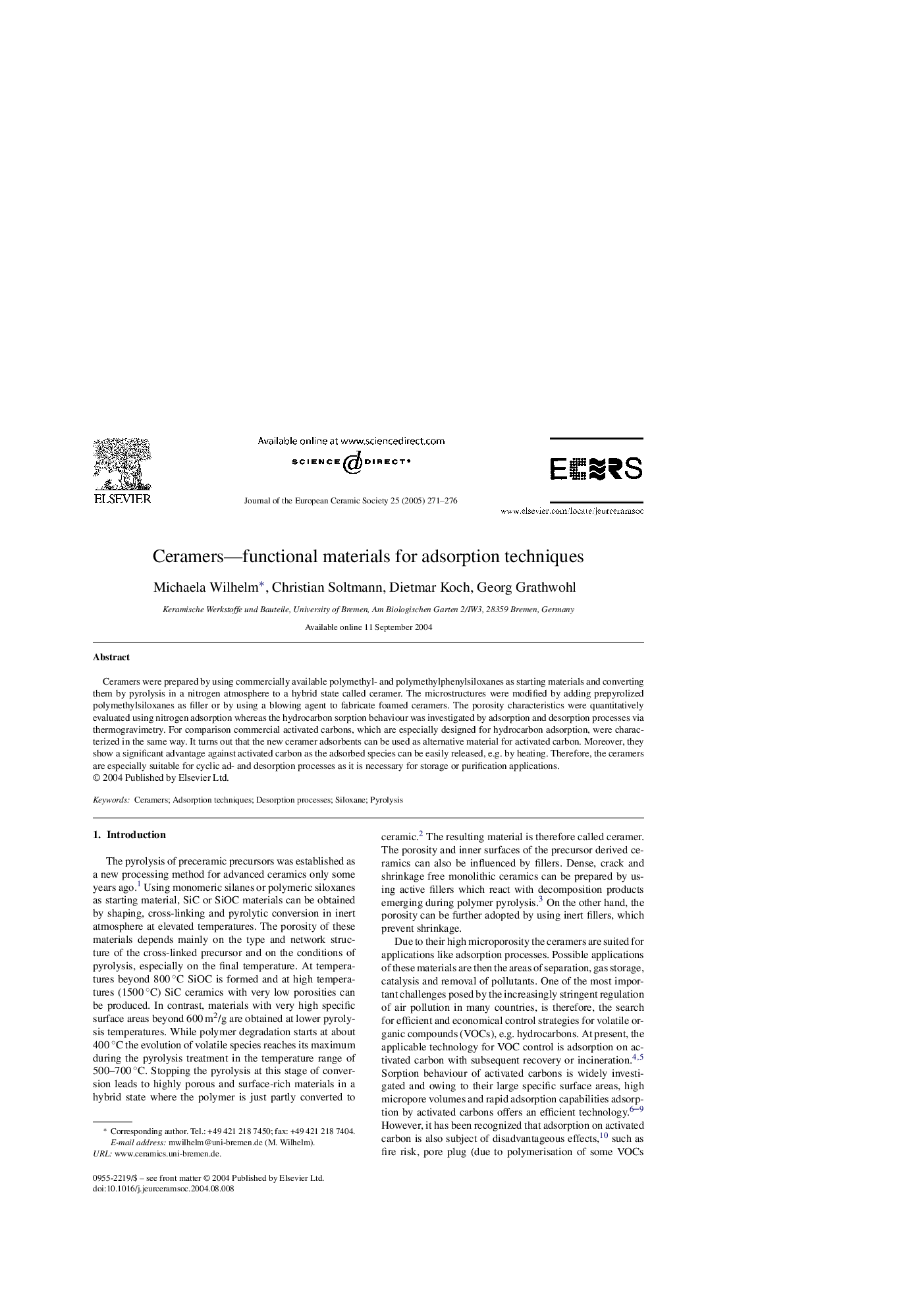| Article ID | Journal | Published Year | Pages | File Type |
|---|---|---|---|---|
| 9777962 | Journal of the European Ceramic Society | 2005 | 6 Pages |
Abstract
Ceramers were prepared by using commercially available polymethyl- and polymethylphenylsiloxanes as starting materials and converting them by pyrolysis in a nitrogen atmosphere to a hybrid state called ceramer. The microstructures were modified by adding prepyrolized polymethylsiloxanes as filler or by using a blowing agent to fabricate foamed ceramers. The porosity characteristics were quantitatively evaluated using nitrogen adsorption whereas the hydrocarbon sorption behaviour was investigated by adsorption and desorption processes via thermogravimetry. For comparison commercial activated carbons, which are especially designed for hydrocarbon adsorption, were characterized in the same way. It turns out that the new ceramer adsorbents can be used as alternative material for activated carbon. Moreover, they show a significant advantage against activated carbon as the adsorbed species can be easily released, e.g. by heating. Therefore, the ceramers are especially suitable for cyclic ad- and desorption processes as it is necessary for storage or purification applications.
Related Topics
Physical Sciences and Engineering
Materials Science
Ceramics and Composites
Authors
Michaela Wilhelm, Christian Soltmann, Dietmar Koch, Georg Grathwohl,
